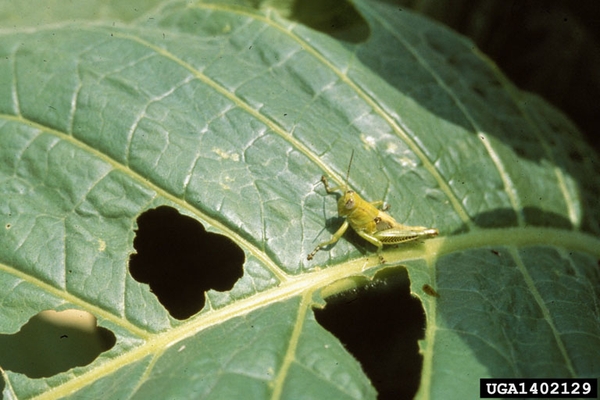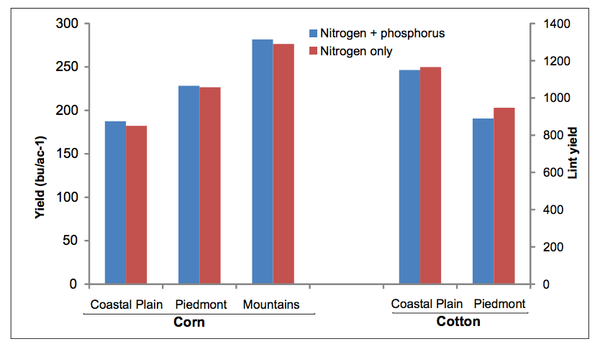
Wet Weather, Late-Planted Beans: Your Data-Driven Playbook
Wet weather across North Carolina delayed soybean planting into July and forced some growers to replant. Many now ask …



El inglés es el idioma de control de esta página. En la medida en que haya algún conflicto entre la traducción al inglés y la traducción, el inglés prevalece.
Al hacer clic en el enlace de traducción se activa un servicio de traducción gratuito para convertir la página al español. Al igual que con cualquier traducción por Internet, la conversión no es sensible al contexto y puede que no traduzca el texto en su significado original. NC State Extension no garantiza la exactitud del texto traducido. Por favor, tenga en cuenta que algunas aplicaciones y/o servicios pueden no funcionar como se espera cuando se traducen.
Inglês é o idioma de controle desta página. Na medida que haja algum conflito entre o texto original em Inglês e a tradução, o Inglês prevalece.
Ao clicar no link de tradução, um serviço gratuito de tradução será ativado para converter a página para o Português. Como em qualquer tradução pela internet, a conversão não é sensivel ao contexto e pode não ocorrer a tradução para o significado orginal. O serviço de Extensão da Carolina do Norte (NC State Extension) não garante a exatidão do texto traduzido. Por favor, observe que algumas funções ou serviços podem não funcionar como esperado após a tradução.
English is the controlling language of this page. To the extent there is any conflict between the English text and the translation, English controls.
Clicking on the translation link activates a free translation service to convert the page to Spanish. As with any Internet translation, the conversion is not context-sensitive and may not translate the text to its original meaning. NC State Extension does not guarantee the accuracy of the translated text. Please note that some applications and/or services may not function as expected when translated.
Collapse ▲
Wet weather across North Carolina delayed soybean planting into July and forced some growers to replant. Many now ask …

As the end of the tobacco season approaches, we’ve had some reports of grasshoppers, budworms, and hornworms in the …

Current Situation in North Carolina Corn is currently at the tasseling and silking stages across the state, which is typically …

To help growers determine the potential of management practices for TSWV, we have created step-by-step guides on how to …

Authors: Igor Sulzbacher Schardong (NC State University), Dominic D. Reisig (NC State University), Berenice Romero (Louisiana State University), Jeff Davis, (Louisiana State …

Soybean can tolerate considerable defoliation before it loses yield. Common major defoliating pest species in NC include bean leaf …

Article by Alexis Alsdorf, NC State Department of Entomology and Plant Pathology PhD student Helicoverpa zea (corn earworm or bollworm) …

It’s been one month since the launch of Root Cause Reports!From seedling diseases to deer damage and stink bugs, …

Are the spots circular with tan centers and purple to dark brown margins, possibly surrounded by yellow halos? → …

With TSWV showing up in more fields this season, Lorena Lopez and I pulled together a quick factsheet on …

To help growers determine the potential of management practices for TSWV, we have created step-by-step guides on how to …

With such a wet May, y’all are probably seeing an uptick in leaf spots on corn, but there’s no …

Join us this year for the 2025 Forage & Grassland Management Annual Webinar Series. The full schedule and registration …
Layby is around the corner! Get timely updates on weed, sucker, disease, and insect control in Tobacco Connection: Vol 2, …

Tobacco Mosaic Virus (TMV) is one of the most persistent and easily spread viruses in tobacco. Here’s what you …

To help growers determine the potential of management practices for TSWV, we have created step-by-step guides on how to …

To help growers determine the potential of management practices for TSWV, we have created step-by-step guides on how to …

To help growers determine the potential of management practices for TSWV, we have created step-by-step guides on how to …

The corn leafhopper (Dalbulus maidis) is a pest of corn that typically lives in warm places, such as areas …

We want to inform you that the Tobacco Thrips Flight and TSWV Intensity Predictor tool is currently experiencing technical …

Several species of grasshoppers can cause foliar feeding damage in tobacco. They are typically most …

This Extension publication provides an overview of the tobacco budworm (Chloridea virescens), a common pest …

This factsheet for farmers describes concepts, terminology, and guidelines concerning soil sampling. Proper testing allows …

Nitrogen fertilizer products are being developed and marketed as having the potential to increase yields and …

Phosphorus (P) is the second most important nutrient in crop production but is often found …

This factsheet describes the symptoms of a shoot inhibitor herbicide injury.

This factsheet describes the symptoms of a metribuzin herbicide injury.

This factsheet describes the symptoms of a dichlobenil herbicide injury.